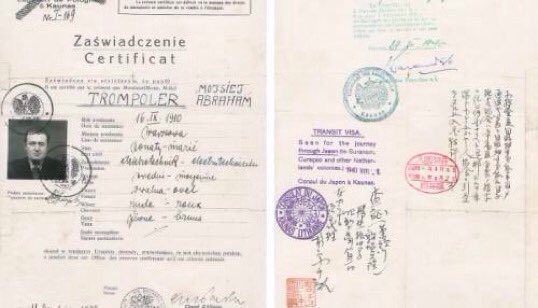The #Righteous during World War Two
Jan Zwartendijk, the angel of Lithuania
A Dutch Consul saved more than 2,000 Jewish lives
1/n
One day at the end of June 1940, Isaac Lewin and his Dutch wife Pessla, both Polish Jews, knock on the door

Jan Zwartendijk, the angel of Lithuania
A Dutch Consul saved more than 2,000 Jewish lives
1/n
One day at the end of June 1940, Isaac Lewin and his Dutch wife Pessla, both Polish Jews, knock on the door


of a certain Jan Zwartendijk in the Lithuanian capital Kaunas. In addition to director of the Philips Lithuania branch, the Dutchman has recently also become deputy consul. Isaac and Pessla want to leave for fear of the advancing Nazis and Soviets. They cannot apply for a visa 

for the Netherlands, because the Netherlands has also been occupied since May 1940. But Curaçao, still free territory of the Kingdom of the Netherlands, wouldn't that be an option? It is the beginning of an unknown exodus that would save the lives of more than 2,000 Jews.
Thanks to Jan Zwartendijk. Not the "Angel of Curaçao", as he was called in publications in 1963 and afterwards, but the "Angel of Lithuania". Because in that chaotic summer of 1940 in the capital Kaunas many lives of Jews in Lithuania
A visa, with Jan Zwartendijk's signature
A visa, with Jan Zwartendijk's signature

could be saved through his actions and that of his Japanese colleague Chiune Sugihara.
• • •
Missing some Tweet in this thread? You can try to
force a refresh

 Read on Twitter
Read on Twitter


















